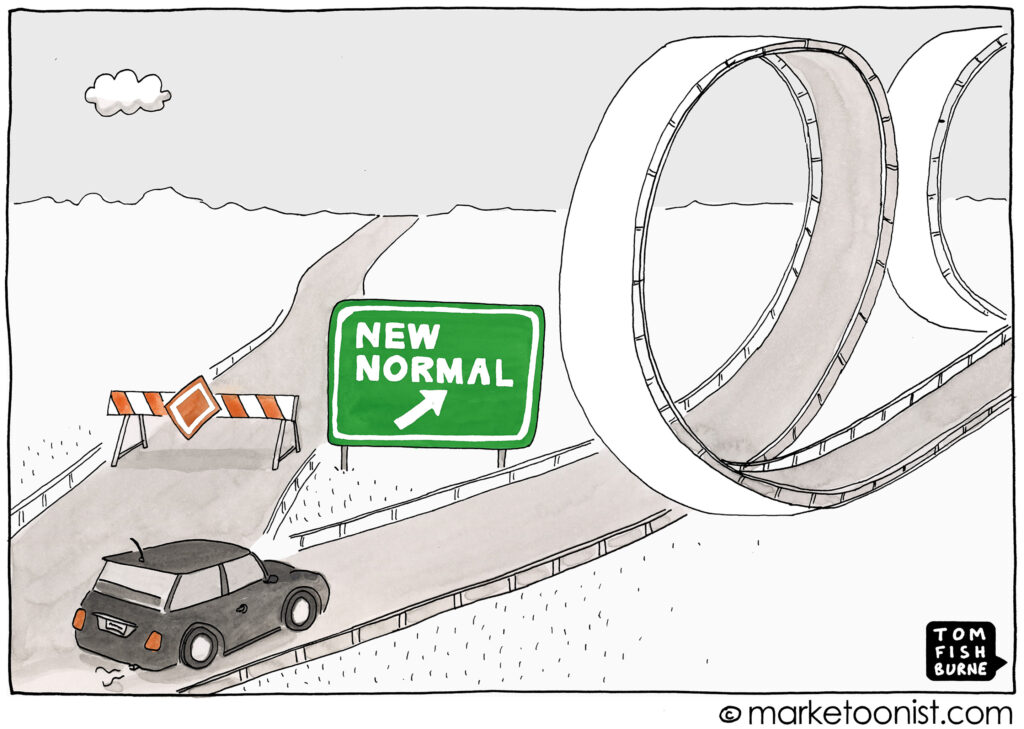In the real world, phantom traffic jams begin when a car in dense traffic slows down slightly, causing the car behind that vehicle to slow down even more, and the slowing pattern spreads backward like a wave for all of the traffic behind – getting worse the farther it goes.
Eventually, all of the cards far behind are forced to stop completely, creating a massive traffic jam…
…all without any accident on the road.
And traffic jams are costly.
The American Transportation Research Institute estimates that the total cost of traffic congestion in the freight industry is over $74 billion annually…
…and according to the 2019 Global Traffic Scorecard released by (INRIX,) drivers in the U.S. lost more than $88 billion due to traffic congestion.
That’s a lot of dough being wasted while sitting in traffic wouldn’t you say?
And the traffic jams seem to be getting worse, as every single car on the road these days seem to be in a massive hurry…
…and much like today’s marketers, they’ve lost any and all patience.
In fact, marketing has become one big tailgate (not the cool pre-party before the football game tailgate,) I’m talking about the annoying car behind you that somehow expects you to go faster when the car in front of you is setting the pace…
…and let the phantom jam begin!
But let’s go back to the beginning – when the automobile was first invented.
The invention of the car completely changed the world, allowing people to travel far and wide and save a ton of time doing it, (beats the heck out of the buggy!)
The vehicle is a mode of transportation – just like media is for advertising.
Media is transportation for your advertising.
When there are too many vehicles on the road at one time and not enough lanes you have traffic – and no one is getting anywhere fast.
Same with marketing – when you have too many advertisers and unlimited media lanes to drive on, you have a complete mess on your hands!
Despite having forward motion for your vehicle, you feel as though you’re not getting anywhere…
…then you become anxious and switch lanes…
…then you get antsy and start tailgating the car in front of you…
…then you become angry, short-sighted, and continue to switch lanes in search of a way out.
End result, total frustration and disappointment with the overall experience.
Remember, to travel a distance it takes time – sure you can try and go faster to save time, but the reality is that speed is inconsequential in the long run.
Same goes with marketing – slow, steady and consistent always win the race.
Too Many Vehicles, Too Many Lanes
With unlimited modes of advertising transportation, brands and consumers both have a difficult decision to make…
…what lane should I take?
It’s why advertisers today face the paradox of choice – too many lanes make buyers less likely to purchase anything.
Brands are going to have a harder time traveling anywhere these days because of the growing fragmentation in the modes of advertising transportation.
In the gold ole advertising days – you only had a handful of transportation modes for your advertising, (like newspaper, TV, radio, billboard, etc.)
Today, it’s almost limitless.
But limitless modes of transportation ironically mean that “nobody’s going anywhere!”
The consumer of today is fatigued – too many ads, too many interruptions, too much intrusion, too much targeting, too much retargeting, too much spam, too much of everything!
We’ve created the mother of all phantom marketing jams…
…in this case, more is not more…
…it’s less.
Drive carefully and stay unruly ~
